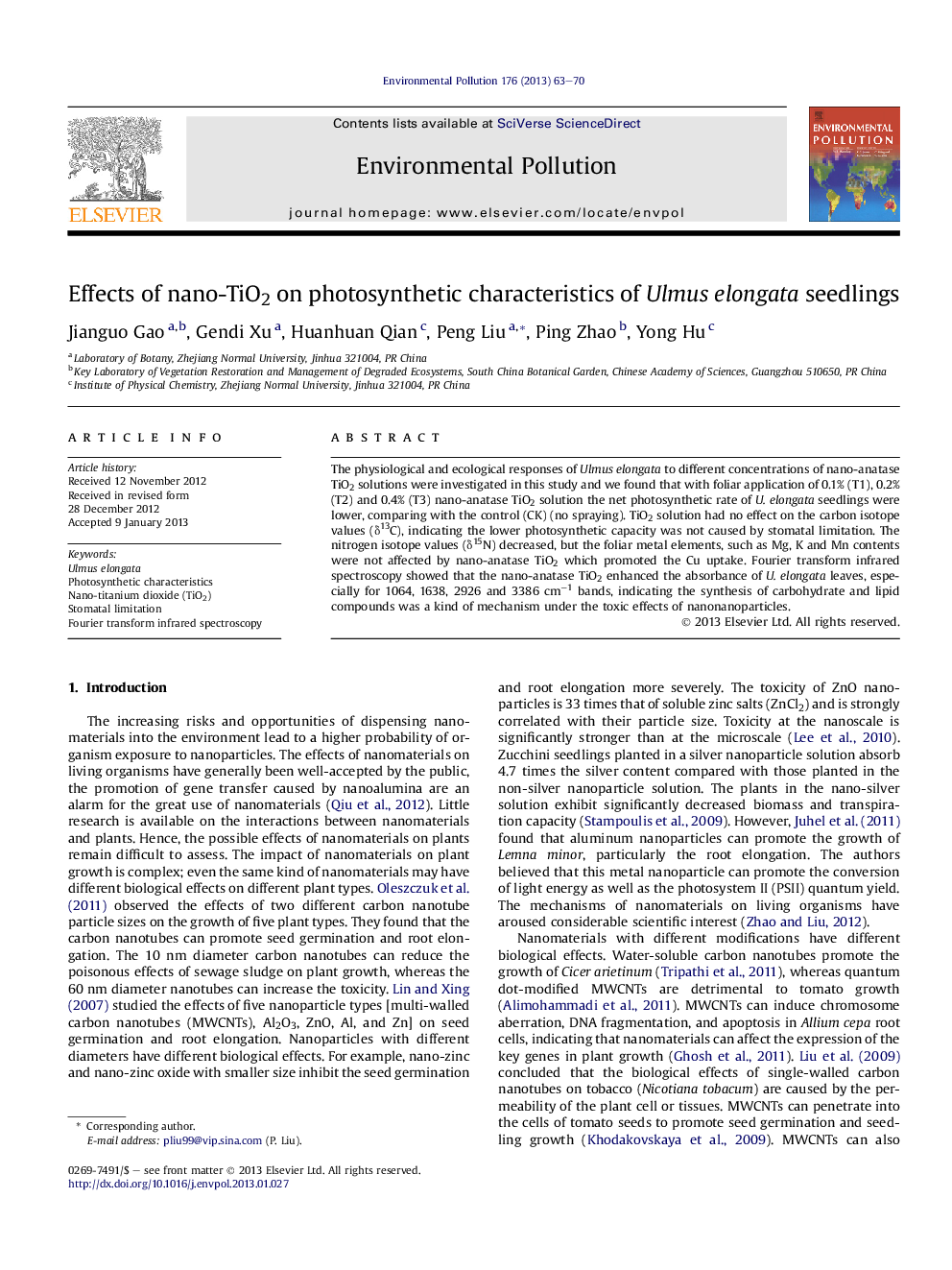| Article ID | Journal | Published Year | Pages | File Type |
|---|---|---|---|---|
| 4424513 | Environmental Pollution | 2013 | 8 Pages |
The physiological and ecological responses of Ulmus elongata to different concentrations of nano-anatase TiO2 solutions were investigated in this study and we found that with foliar application of 0.1% (T1), 0.2% (T2) and 0.4% (T3) nano-anatase TiO2 solution the net photosynthetic rate of U. elongata seedlings were lower, comparing with the control (CK) (no spraying). TiO2 solution had no effect on the carbon isotope values (δ13C), indicating the lower photosynthetic capacity was not caused by stomatal limitation. The nitrogen isotope values (δ15N) decreased, but the foliar metal elements, such as Mg, K and Mn contents were not affected by nano-anatase TiO2 which promoted the Cu uptake. Fourier transform infrared spectroscopy showed that the nano-anatase TiO2 enhanced the absorbance of U. elongata leaves, especially for 1064, 1638, 2926 and 3386 cm−1 bands, indicating the synthesis of carbohydrate and lipid compounds was a kind of mechanism under the toxic effects of nanonanoparticles.
► The responses of a woody plant Ulmus elongata to nano-TiO2 are studied. ► Non-stomatal limitation is the reason of lower photosynthesis. ► Light plays an important role in determining the interactions. ► The nano-TiO2 has not affect on 13C fractionation, but decreases δ15N value.
